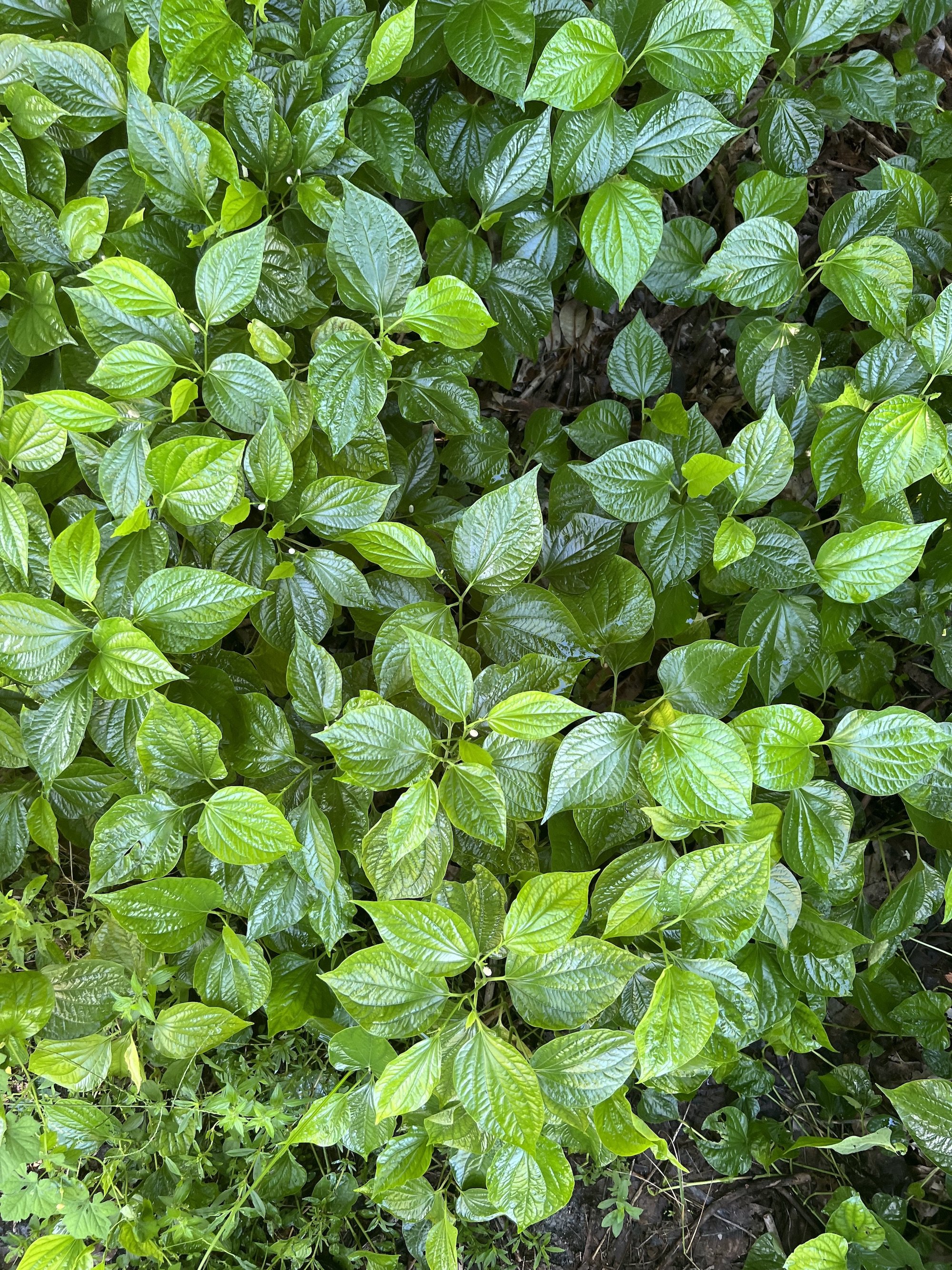
Plant Profiles
Ashwaganda
An incredibly medicinal plant generally grown for its roots and leaves. Although it is known to have benefit for a great many bodily functions, it is particularly well known for being an adpatagen, helping us to respond better to stress, and for giving a well-rounded strength and energy and decreasing inflammation.
Hierba Mora
A common plant you’ll find growing as “a weed” throughout the Americas, this green when eaten young (before it flowers) is incredibly nutrient rich and flavorful much like spinach, and is eaten regularly in soups and stir-fries in many Indigenous and Latinx communities as a common quelite. The fruits are small blueberry-sized berries that are poisonous when green, but tasty and harmless when ripened to fully black.
Tobacco
With large, thick, sticky leaves, tobacco is one of many indigenous, medicinal plants that has become villainized, but also weaponized into the commercial toxic products we find ourselves addicted to at alarming rates. Essential to many indigenous cultures as a beloved herb, tobacco has been very misunderstood in our capitalistic post-colonial world. (Photo-Tobacco was part of Native American culture long before Europeans)
Quishtán
This Solanaceous green is super spiny, but when the young leaves and stems are cooked down they make for a delicious, melt-in-your-mouth green with a spinach-artichoke flavor. Larger spines are removed while younger ones soften up easily. Quishtán is indigenous to Guatemala and is commonly cooked en caldos y sopas, in broths and soups.




